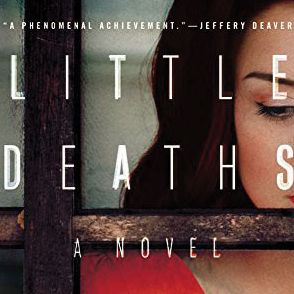
ÔÇ£I think writing about the death of children would have been incredibly painful if I was a mother,ÔÇØ said Emma Flint, one of the authors touted at Book Expo AmericaÔÇÖs hype-generating ÔÇ£Buzz PanelÔÇØ Wednesday afternoon in Chicago. Her forthcoming first novel, Little Deaths, fictionalizes the scandal surrounding Alice Crimmins, a Queens mother whose children were strangled in 1965. ÔÇ£The death of children is obviously a tragedy, particularly the murder of children, but IÔÇÖm writing about the effects of those deaths on their mother, and I think it would have been just too painful.ÔÇØ
Any possible reluctance to┬áread┬áabout it failed to deter some of BEAÔÇÖs most loudly promoted authors. The countryÔÇÖs largest book trade show, Book Expo, which wrapped Friday, feels a little small this year ÔÇö probably a couple thousand shy of last yearÔÇÖs attendance. That might largely be due to its one-year relocation to Chicago, which takes the fair outside the Javits Center for the first time since 2008 and forces New York companies to cut back due to travel expenses. (It returns to Javits next year.) Much of what remains, especially during todayÔÇÖs consumer-facing adjunct, BookCon, increasingly targets YA readers. And then there are all the adult novels that target children in their pages.
Three of the six books featured at the Buzz Panel turn on youth who have ÔÇ£gone from living to dead,ÔÇØ in the phrasing of Emily FridlundÔÇÖs novel,┬áHistory of Wolves. Grove editor Elizabeth Schmitz called that debut, which turns on a four-year-old boyÔÇÖs murder, ÔÇ£dark, brilliantly dark,ÔÇØ referencing Psycho, WinterÔÇÖs Bone, and SmillaÔÇÖs Sense of Snow. A fourth book, Nathan HillÔÇÖs┬áThe Nix, has no literal dead children, but the mythical title beast in his expansive comic saga is an equine water spirit that lures children to their deaths by drowning.
Two fall authors who spoke at a Thursday lunch thrown by Little, Brown doubled down on child trouble giving us siblings in extremis. Affinity KomarÔÇÖs┬áMischling, whose galleys were handed out on the show floor by a publicist shouting ÔÇ£What Anthony Doerr says you should read next!ÔÇØ, stars a pair of twins subjected to medical experiments at Auschwitz. Two albino African-American brothers donÔÇÖt fare much better in Beth MacyÔÇÖs┬áTruevine, a nonfiction account of their kidnapping and display as circus freaks in the Jim Crow South.
Child peril isnÔÇÖt a new device in fiction of any brow; a boyÔÇÖs unknowing captivity is what made Emma DonoghueÔÇÖs very artful novel┬áThe Room┬áand its film adaptation such sensations. ItÔÇÖs a reliable outrage to adults with and without kids, a narrative shock in a market glutted with shocks, especially in the increasingly co-opted genre of crime fiction. (Three of this yearÔÇÖs five Buzz Panel novels could be described as literary crime.) Children in grave danger are easy to turn to because a certain kind of reader craves in fiction what she might avoid at all costs in real life, no matter how often it actually happens.
It happens every day ÔÇö a fact grimly documented in the Buzz panelÔÇÖs only nonfiction title, Gary YoungeÔÇÖs┬áAnother Day in the Death of America. Shocked by the statistic that seven children are killed by guns every day in this country, Younge picked a random day in 2013 and sought the families of the ten minors shot to death within those 24 hours. His editor, Nation BooksÔÇÖs Alessandra Bastagli, laid out the facts at the panel, noting that a yearÔÇÖs tally of child shootings comprises 134 Sandy Hooks ÔÇö and adding that ÔÇ£sometimes the things we think of as normal are not normal.ÔÇØ What relegates child murder to local papersÔÇÖ crime blotters is its frequency. ItÔÇÖs a ÔÇ£dog bites man story,ÔÇØ as Bastagli put it, and its very banality is evidence of national derangement. For Younge, recognizing the derangement meant facing the reality and exploring the gruesome and particular details of a mass phenomenon.
I havenÔÇÖt read the galleys of the forthcoming novels in which child suffering plays a part. All of them sound fascinating and worth cracking, and all seem to respect the gravity of their morbid subject. (Little Deaths┬áis actually a critique of media prurience.) But fictional violence, wielded with abandon, threatens to distract us from the real thing. The death of children is a gross perversion of the natural order that happens every day. I donÔÇÖt envy Gary Younge the task of documenting that dark truth. (Unlike Flint, he is a parent.) But IÔÇÖm grateful that he took it on.
* This post originally misspelled the last name of the author of Mischling. It is Affinity Konar, not Komar.

